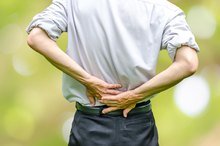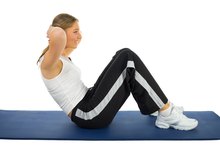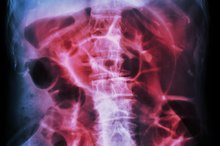What does fact checked mean?
At Healthfully, we strive to deliver objective content that is accurate and up-to-date. Our team periodically reviews articles in order to ensure content quality. The sources cited below consist of evidence from peer-reviewed journals, prominent medical organizations, academic associations, and government data.
- MedlinePlus: Abdominal Wall Surgery
- Harvard Medical School: Abdominal Fat and What to Do About It
- Centers for Disease Control and Prevention: Losing Weight
The information contained on this site is for informational purposes only, and should not be used as a substitute for the advice of a professional health care provider. Please check with the appropriate physician regarding health questions and concerns. Although we strive to deliver accurate and up-to-date information, no guarantee to that effect is made.
Can a Diet Get Rid of a Pendulous Stomach?
The appearance of a pendulous abdomen generally occurs because of excess fat, loose muscles or overstretched skin. Dieting to lose weight can help reduce the bulge of a pendulous tummy, although some people require exercise and even surgery to eradicate this type of lower abdominal protuberance 1. Talk to your doctor before you begin a diet, especially if you have diabetes or other chronic health problems.
Pendulous Abdomen
Some people refer to a pendulous abdomen as a potbelly. The girth around and over your lower abdomen can enlarge in response to overeating, pregnancy, lack of exercise, and extreme weight loss. Abdominal fat that hangs low on your trunk is most likely due to an excess of subcutaneous fat, the kind that accumulates under your skin, although abdominal girth may also include visceral fat, the type that forms around your internal organs. Weight loss often provides the first line of treatment in helping create a thinner, flatter abdomen. Dieting won’t remove excess skin or tighten loose muscles, however.
- Some people refer to a pendulous abdomen as a potbelly.
- Abdominal fat that hangs low on your trunk is most likely due to an excess of subcutaneous fat, the kind that accumulates under your skin, although abdominal girth may also include visceral fat, the type that forms around your internal organs.
Diet
What Are the Female Symptoms of an Incisional Hernia?
Learn More
Normal aging often involves weight gain in the abdominal area. This occurs as the result of reduced muscle mass and slowing metabolism. Women tend to experience an increase in abdominal fat after menopause, due to hormonal changes. Even though you can’t direct your body to lose fat in just one area, cutting calories will help you trim down all over, leading to a reduction in excess abdominal fat.
- Normal aging often involves weight gain in the abdominal area.
- Even though you can’t direct your body to lose fat in just one area, cutting calories will help you trim down all over, leading to a reduction in excess abdominal fat.
Method
Dieting that eliminates between 500 and 1,000 calories each day will lead to weight loss of about one to two pounds each week. Although this may seem like a slow rate of weight loss, the Centers for Disease Control and Prevention advise that this gradual and steady loss of fat provides the greatest chance of keeping the weight off 3.
Considerations
Flank Pain From a Stretching Tear or Pulled Muscle
Learn More
A pendulous abdomen that lingers after weight loss often contains excess skin or loose muscles. Abdominal exercises may help tone weak muscles. Conditions that cause extreme stretching of your abdominal muscles, such as pregnancy, may result in divarication of recti, a type of weakness in your abdominal wall. If diet and exercise fail to reduce the size of your pendulous abdomen, you may require surgery, such as an abdominoplasty, to remove and tighten excess skin and muscle tissues.
- A pendulous abdomen that lingers after weight loss often contains excess skin or loose muscles.
- If diet and exercise fail to reduce the size of your pendulous abdomen, you may require surgery, such as an abdominoplasty, to remove and tighten excess skin and muscle tissues.
Related Articles
References
Writer Bio
Laura Wallace Henderson, a professional freelance writer, began writing in 1989. Her articles appear online at Biz Mojo, Walden University and various other websites. She has served as the co-editor for "Kansas Women: Focus on Health." She continues to empower and encourage women everywhere by promoting health, career growth and business management skills.








